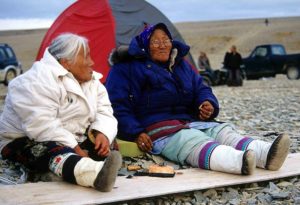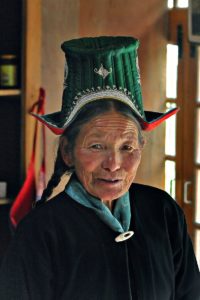
The goal of this website, Peaceful Societies, is to promote peacefulness through the study of societies that are already nonviolent. They provide examples from which we might learn to be more peaceful by dealing more effectively and nonviolently with conflict. This website also strives to reflect the goals of its host, the UAB Department of Anthropology. This department further expands the notion of peace studies by taking a multidisciplinary approach and including the equally important areas of peace, justice, and ecology. Keeping these broader goals in mind, Peaceful Societies has decided to create a section dedicated to videos representing many of the peaceful societies included in the encyclopedia page.
But why bother with videos? Videos provide a glimpse into the lives of people and their lived experiences. They also reinforce the written ethnographic word with an additional sensory medium. Anthropology itself is a holistic field and by its very nature highly descriptive. Videos are essentially another implement in our tool kit to bring cultures closer to the reader and other researchers.

The videos included here come in various forms and exhibit different contexts of these societies. They include, for example, the work of nonprofits, academics, and even students. There is a wealth of video material available online so this meant choosing those with the most relevance to this website and the overall goal of Peaceful Societies. Like the news and reviews, many of the videos expand and modify our understandings of the ways nonviolence plays out in the real worlds of these 25 societies.
In some cases, such as the Amish and the Ladakhi, a number of videos give us insights into the daily lives of these people as well as the tourism industry that has developed around them. Another example might be the Nubians or the Birhor, many of whom have been relocated by their respective governments to areas where their traditional ways of life have been challenged. For the Ifaluk and the Inuit, their latest struggles arise as a result of climate change and its effect on their subsistence patterns.
Each society has its own distinct attributes and faces its own challenges. Furthermore, cultures are never static and are constantly responding to environmental and human borne conflicts on a regular basis. However, this also brings up issues of social justice as some peaceful societies are poorly represented and often misunderstood, leading to the decline of their cultures in the face of globalization, modernization, and institutions that seek to integrate them into the locally dominant cultures and religions.

Some of the videos here have already been reviewed on Peaceful Societies and more information may be found through the provided links to the news and reviews as well as the encyclopedia page for each society. We encourage viewers to explore these different options in order to gain a well-rounded view of each society. Also, the video section will be an ongoing project that we hope to keep updating as new videos become available. It is our goal to create a user-friendly experience and encourage viewers to learn more about these peaceful societies.